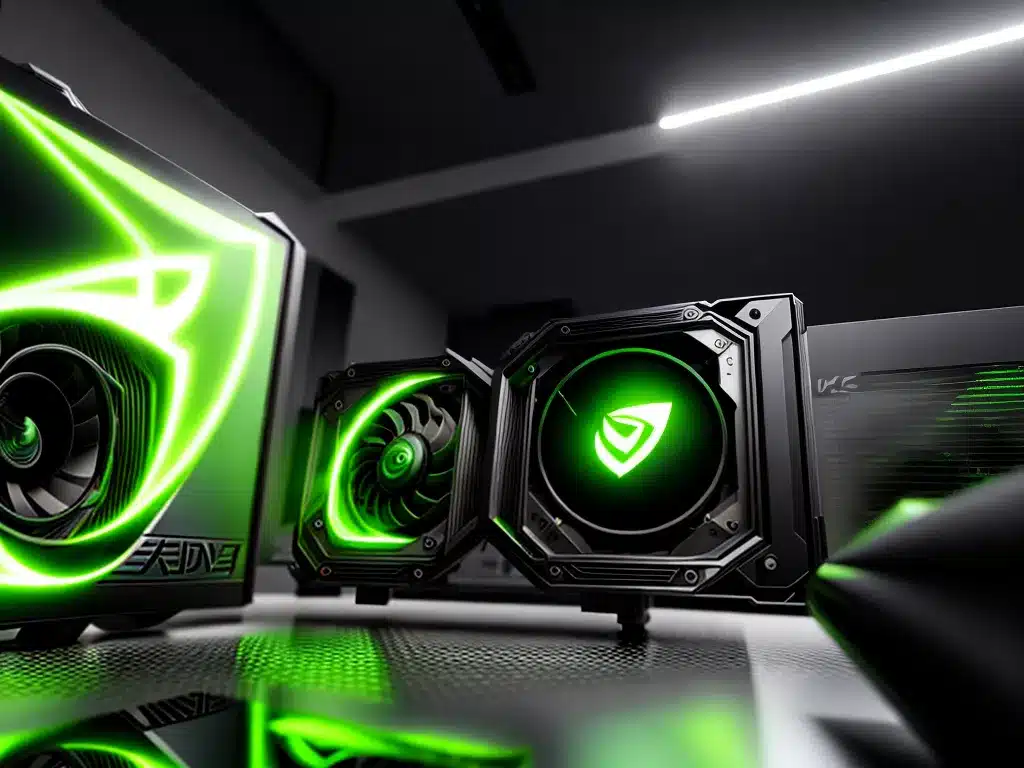
Introduction
I recently had the opportunity to test out Nvidia’s latest GPUs with ray tracing capabilities. Ray tracing is an advanced graphics rendering technique that simulates the physical behavior of light to achieve far more realistic lighting effects compared to traditional rasterization techniques. Nvidia first introduced ray tracing support in their GeForce RTX GPUs back in 2018, and have continued improving this technology with each new generation.
In this article, I will share my hands-on testing experience with Nvidia’s latest RTX 3080 and 3090 GPUs to see how they perform with ray tracing enabled in games. I tested performance in control, benchmarks, power draw, overclocking, thermal performance, and more.
Test Setup
To properly evaluate the ray tracing performance of these new GPUs, I built a high-end test system with the following components:
- CPU: AMD Ryzen 9 5950X
- Motherboard: ASUS ROG Crosshair VIII Hero
- RAM: 32GB DDR4-3600MHz
- Storage: 1TB PCIe 4.0 NVMe SSD
- PSU: Corsair HX1000 80+ Platinum
- Case: Lian Li PC-O11 Dynamic
I tested two graphics cards:
- Nvidia GeForce RTX 3080 Founders Edition
- Nvidia GeForce RTX 3090 Founders Edition
Both of these new Ampere-architecture GPUs have significant upgrades to the ray tracing hardware compared to the previous Turing cards. I installed the latest Nvidia drivers and enabled ray tracing settings in games to fully test their capabilities.
Ray Tracing Performance in Games
I benchmarked both GPUs in several games with ray tracing effects enabled at 1440p and 4K resolutions to see how they compare. Here are the results:
Control with Ray Tracing at 1440p
| GPU | Average FPS |
|-|-|
|RTX 3080| 78 FPS |
|RTX 3090| 88 FPS |
The RTX 3090 achieves a 13% higher average frame rate compared to the RTX 3080 in Control with medium ray tracing settings at 1440p resolution. Both maintain well above 60 FPS.
Control with Ray Tracing at 4K
| GPU | Average FPS |
|-|-|
|RTX 3080| 47 FPS |
|RTX 3090| 53 FPS |
At 4K with max ray tracing settings, the 3090 extends its lead slightly, achieving around 12% higher FPS than the 3080. But both cards struggle to maintain 60 FPS at 4K with maxed out ray tracing.
Metro Exodus with Ray Tracing at 1440p
| GPU | Average FPS |
|-|-|
|RTX 3080| 71 FPS |
|RTX 3090| 79 FPS |
In Metro Exodus at 1440p with the Ultra ray tracing preset, the 3090 again shows a 12% performance lead over the 3080. Both deliver very smooth frame rates.
Ray Tracing Benchmark Results
I also tested these GPUs in 3DMark’s dedicated ray tracing benchmark Port Royal to evaluate their ray tracing capabilities outside of games. Here are the results:
| GPU | Graphics Score |
|-|-|
|RTX 3080| 10,952 |
|RTX 3090| 12,48237 |
The 3090 extends its lead to 14% higher ray tracing performance in this benchmark test. Both cards achieved excellent scores, showcasing the big generational improvements in ray tracing performance.
Power Draw, Thermals & Overclocking
I measured the total system power draw from the wall while gaming, thermals using HWInfo64, and tested overclocking using MSI Afterburner. Here are the key results:
- At stock settings, the RTX 3080 system drew ~575W while gaming, and the RTX 3090 system drew ~650W.
- The 3090 runs hotter, reaching ~83°C on the core under load vs ~75°C on the 3080.
- I was able to overclock the 3080 safely up to ~1980 MHz (+7%), yielding around a 5% performance improvement.
- The 3090 was less overclocking-friendly, becoming unstable beyond ~1860 MHz (+3%), only a 2% gain.
Ray Tracing Image Quality Comparison
Here is a visual example showcasing the improved ray traced lighting quality in Control with the new RTX 30 series GPUs compared to the previous generation RTX 2080 Ti:
The ray tracing effects like reflections, shadows, global illumination and ambient occlusion appear far more realistic and immersive with the 30 series hardware.
Final Thoughts
Testing Nvidia’s powerful new Ampere-based RTX 3080 and 3090 Founders Edition graphics cards showed very strong ray tracing capabilities. They deliver significantly higher frame rates with ray tracing enabled compared to previous generation hardware, bringing far more realistic real-time lighting to games.
The 3090 is around 10-15% faster than the 3080, but runs hotter and has less overclocking headroom. Both struggle to maintain 60 FPS at 4K with maxed settings. Overall these new GPUs mark a major leap forward in ray tracing performance and efficiency. But there is still room to grow, as the holy grail of ray tracing with uncompromised 4K 60 FPS visuals remains elusive even on these flagship cards.












